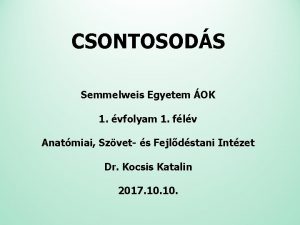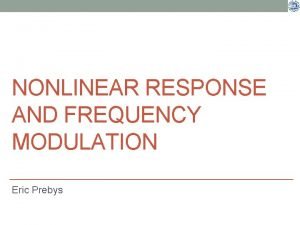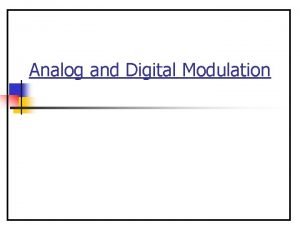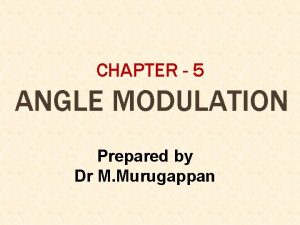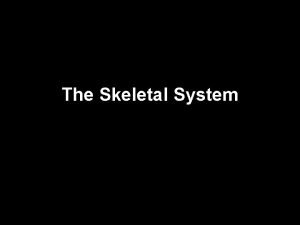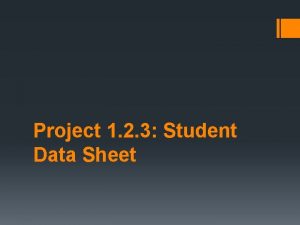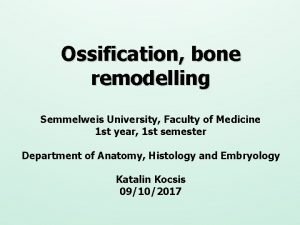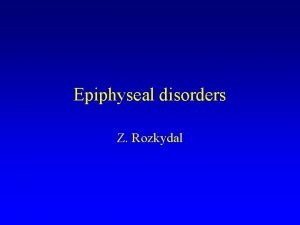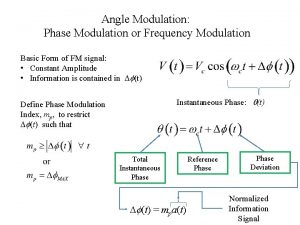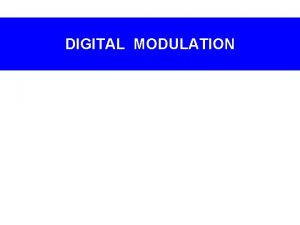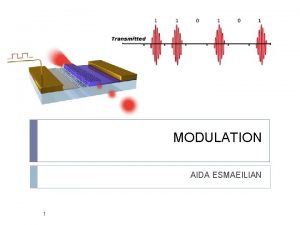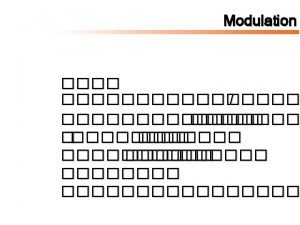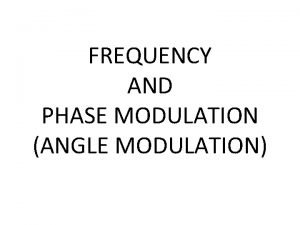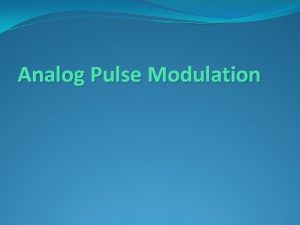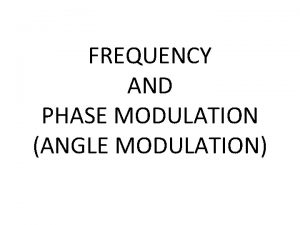Local Epiphyseal Growth Modulation for the Early Treatment









- Slides: 9

Local Epiphyseal Growth Modulation for the Early Treatment of AIS: Experimental Validation Using A Porcine Model Bahe Hachem Ph. D candidate, Stefan Parent MD, Ph. D. , Carl-Éric Aubin Ph. D. , P. Eng.

Fusionless Scoliosis Correction 2 Current compression-based techniques: Promising minimally invasive techniques for scoliosis correction Span the intervertebral disc space Anterior Vertebral Tethering (Samdani 2014) Vertebral Body Stapling (Betz 2010) Concerns about long-term disc health (Hunt 2010) “Hemi-Staple” locally compresses the growth plate w/o crossing the disc: Successfully tested on a porcine model Preserve disc health Limitation: one sided growth plate modulation Vertebral Wedging o 8 Hemi-Staple (Driscoll 2012) 0 o

Study Objective 3 Test an enhanced dual-side epiphyseal intravertebral staple using an immature porcine model without crossing the intervertebral disc space

Study Design T 6 4 T 7 T 8 11 Landrace x Yorkshire Female Pigs Instr. Levels T 9 T 10 T 11 T 12 12 wks old upon surgery 7 Instrumented 4 Controls T 14 T 15 12 wks Follow-up Monthly Biplanar Radiographs Regional Local Coronal / Sagittal Cobb Angle Vertebral / intervertebral wedging Custom sling for standardized PA and lateral radiographs to reduce positioning artifacts b/w acquisitions

Implant Insertion 4 -step surgical maneuver 5 Large Vertebral Body Intra-op localization using Fluoroscopy Inserted Implants Small Vertebral Body Intra-op inter-prongs distance adjustment for various vertebral morphologies

Results 6 Average Surgery time (incision to closure): 32. 5± 8. 17 min with minimal blood loss (<50 ml) Survival rate was 100% One case omitted at study completion due to deep tissue infection noticed at dissection No implant dislodgment was noticed

Results 7 T 7 -T 9 Cobb angle 25. 0 o± 4. 2° Instrumented Controls 18. 2 o± 2. 7° Disc wedging in opposite direction Cumulative vertebral wedging: 45. 4° Reversed disc wedging No sagittal profile modification

Hemi-Staple vs Dual-Staple 8 4. 1° Dual-Staple 3 x Hemi-Staple Vertebral Wedging 3 x Reduced vertebral height at implant side

Conclusion 9 Localized growth modulation, with significant vertebral wedging exclusive of the intervertebral disc. Perspectives By increasing the number of instrumented levels, one may achieve higher curvature control potentially providing a unique local 3 D correction method to correct spinal deformity without affecting the intervertebral disk and preserving mobility. Future study: Analysis of disc health
